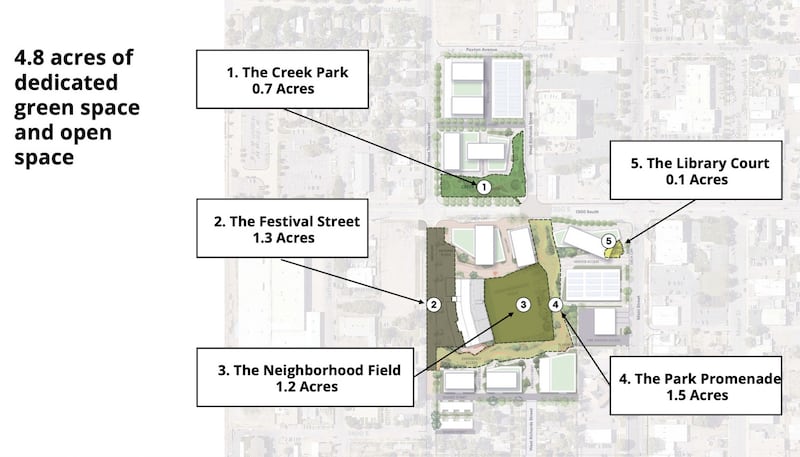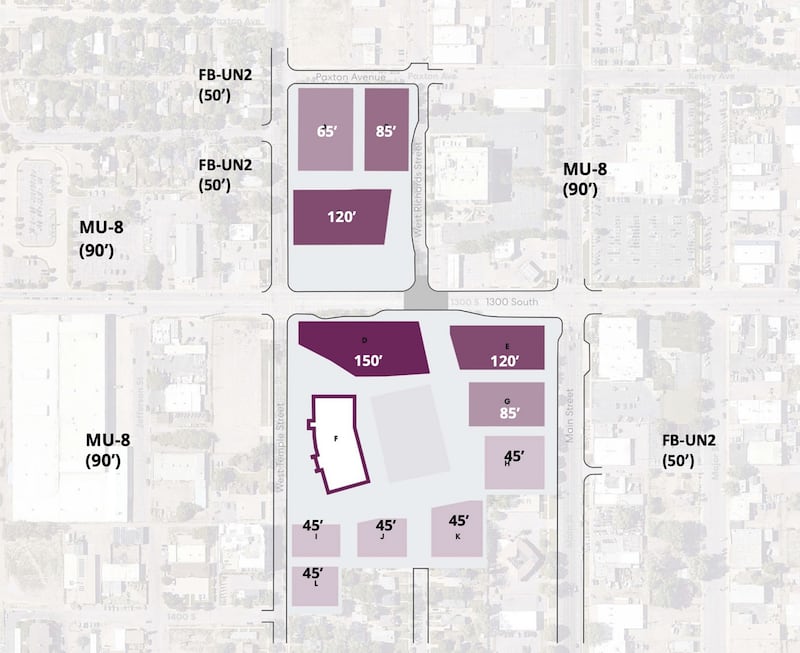Big changes are coming to Smith’s Ballpark, but Salt Lake leaders say they’d like to have more assurances that its Community Reinvestment Agency will stick to the plan before they sign off on it.
Members of the Salt Lake City Community Reinvestment Agency board of directors, who are all City Council members, postponed a vote this week to endorse the Ballpark NEXT Community Design Plan, which would set the stage for redevelopment of the site. The board declined largely because it felt that an endorsement wasn’t enough to guarantee that the area would be developed as planned.
“We made it very clear in our meetings ... that the council feels really strongly about implementing this plan, and set (up) the vision as a plan,” Salt Lake City Council Vice Chairman Alejandro Puy told KSL.com after the meeting on Tuesday.
The board’s decision came after Reinvestment Agency planners provided an update on the proposed redevelopment of the old home of the Salt Lake Bees, after the agency released it to the public in July. A few minor tweaks were made following additional feedback, but the gist of it remains the same.
It calls for a partial reuse of the 31-year-old ballpark, tearing down all but its first base bleachers, while a part of its playing surface is turned into a multi-use field for events and general community park space. A blend of new developments would be constructed throughout the nearly 15 acres of land between the old stadium site and the parking lot across the street. These include housing, a hotel, retail space, a new fire station and library, and a parking structure.
About 4.8 acres will be dedicated to green space and open space through the field, a new park north of 1300 South at West Temple, a festival street and other select areas, said Lauren Parisi, a senior project manager for the Reinvestment Agency, noting that green space was a key issue brought up in comments after the plan was unveiled.
“This plan transforms what was previously inaccessible space into vibrant public space for Ballpark neighbors and visitors alike,” she said. “The project team did consider dedicating an additional block to green space, but ultimately determined it was not the best option, especially in regard to maintenance cost and, most importantly, safety.”
Buildings would range in height, reaching as high as 150 feet along the corner of 1300 South and West Temple, although final heights may vary. A proposed parking garage could end up being smaller, but it’s slated to remain on Main Street to avoid congestion on residential streets, Parisi said. She added that the area is more suitable for density because of its proximity to the Ballpark TRAX station.

Views of the Wasatch Mountains won’t be blocked entirely from home plate, which will be preserved, per the plan. The same goes for the etched glass artwork on the windows of the part of the ballpark that will be demolished. It also includes ways for the site to be utilized for events.
Planning will also be used to balance out Utah’s liquor laws so that bars and restaurants and open spaces can coexist, Parisi said, when asked by the board about that concern.

The board appeared to be generally supportive of the plan. It “feels like a win for the neighborhood,” said Salt Lake City Councilman Darin Mano, the board’s chair, whose district includes Ballpark.
Yet, the meeting ended without a vote. An endorsement gives the Reinvestment Agency more flexibility with the plan, but it’s not as certain as adopting the measure, both Mano and Puy said. They explained that they want to make sure there isn’t a system in place that allows the vision to be gutted, ripping out all the work and community feedback that has gone into the plan over the past year, especially.
“It’s just like you’re getting married and you’re sort of planning for your divorce right from the beginning,” Puy said after the meeting. “There’s always ways of changing a plan. ... We’d like to stick with (the plan).”
As it stands, it’s unclear if the board has that authority. Reinvestment Agency staff have been in communication with the city attorney’s office to determine “the appropriate language” to use in resolutions of this caliber, according to Jennifer Bruno, executive director of the City Council.
The board agreed to wait on that review before a vote. The situation is expected to be sorted out in the coming weeks, and a vote to endorse or adopt the plan could take place as early as the board’s next meeting in October, Puy said.

